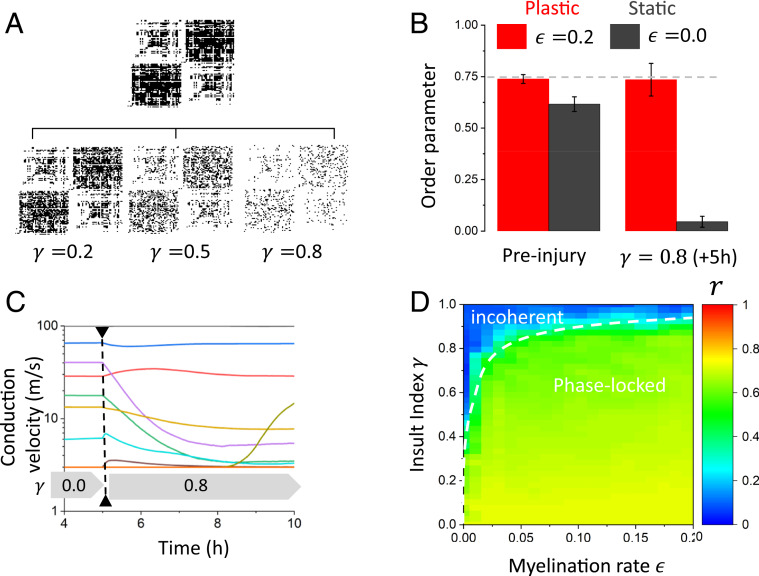Fig. 6.
Network resilience to sudden and diffuse decrease in connectivity. (A) To examine the influence of adaptive myelination on network structure dynamics, we considered a random and spatially diffuse injury scaled by the insult index . Spontaneous changes to network connectivity and phase shuffling were performed after 5 h of network evolution. We then examined the oscillatory properties and compared the synchronization properties of the network before and after injury, after network conduction velocities have adapted. (B) Adaptive myelination allows the system to maintain a high degree of phase-locked synchrony, even after an injury that caused the destruction of 80% of the connections. The order parameter, in the case of plastic conduction velocities, remains high despite the insult applied to the network, indicative of oscillatory resilience. (C) After a sudden decrease in synaptic coupling occurs, the dynamics of the conduction velocities (for preserved connections) are altered, and a change in overall conduction velocity statistics takes place. (D) The myelination rate compensates for an increased degree of injury to preserve oscillatory synchrony. The more significant the connectivity insult, the more myelination is required to keep the order parameter high—and hence, keep the remaining networks synchronized. Here, a frequency of was used, , and .

